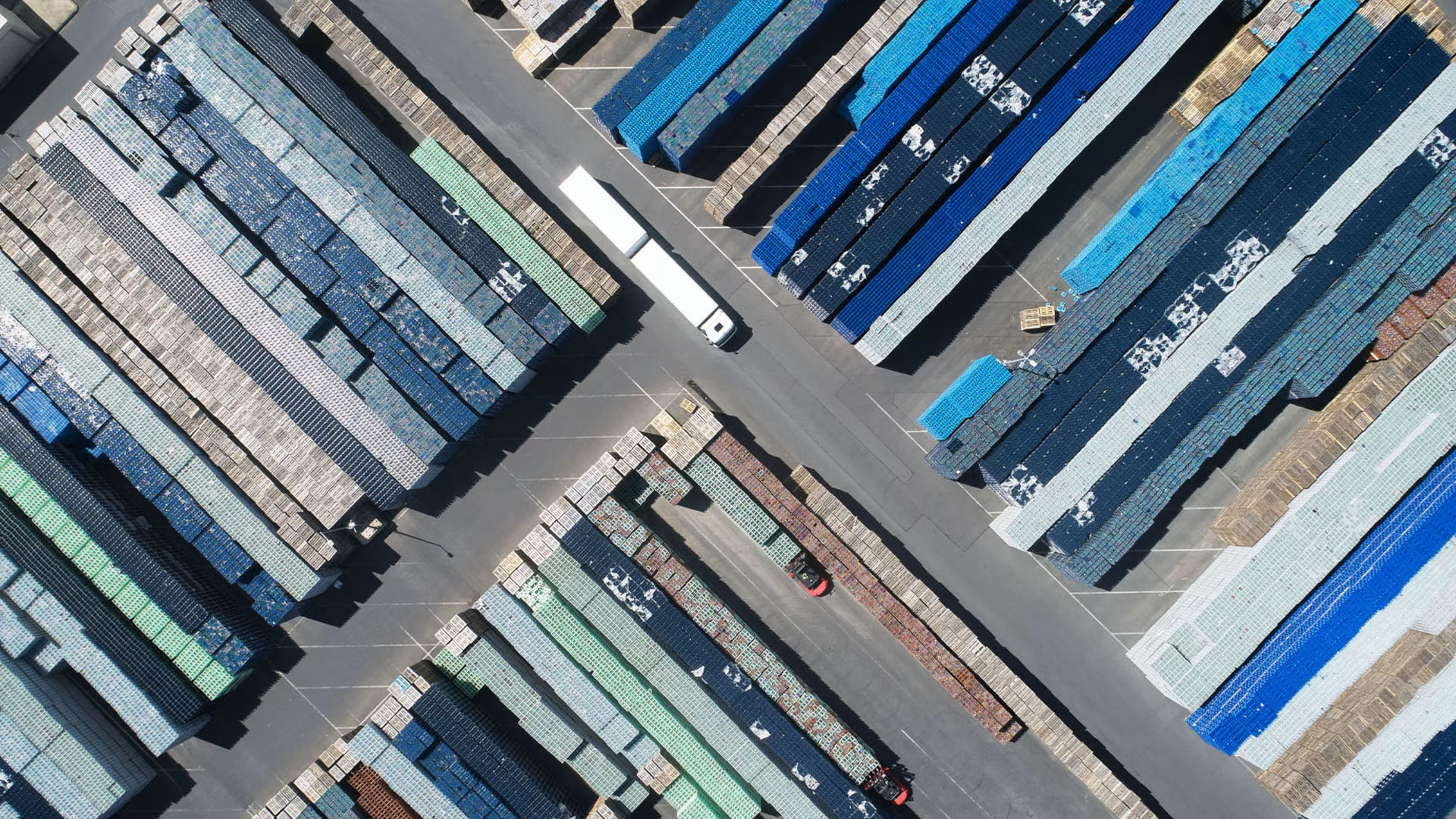
FAQs – everything about mineral water
Our consumer service team will gladly answer any of your questions by email. Some questions are repeatedly asked, so we’ve compiled a set of answers to address the most popular topics. Questions and information are sorted according to topic. We want to continually expand the “Frequently asked questions” section and look forward to receiving more of your questions.
Mineral Water
Gerolsteiner mineral water is not just a symbol of purity and quality, but also of the deep connection between nature and well-being. Customers often wonder what constitutes natural mineral water and how safe it is to drink. Find your answers below.
Originate from underground water aquifers
Maintain its original purity
Be nutritionally beneficial
Have a natural mineral content
Be bottled at the point of origin
Officially recognized by controlling entity
Hardly any other food or beverage is as strictly monitored as natural mineral water. It is the only one that requires official approval before it can be sold. For this reason, our mineral water is tested over 200 times before, during and after the bottling process. In Germany, The Mineral and Table Water Regulation (MTVO) determines mineral water designation and governs its processing, packaging and labelling.
Before our mineral water products leave the company, the mineral content, carbonic acid content, microbiology and other aspects are analysed. The controls we have in place and the daily testing we conduct meet the MTVO’s highest requirement, ensuring we can sell our water as “natural mineral water”. In addition to our own exhaustive testing, regular analyses, both during processing and in the marketplace, are carried out by the independent Fresenius Institute and by the German government.
Essentially, the ingredients of a mineral water cannot be changed. However, Germany’s Mineral and Table Water Regulation does allow the removal of iron, manganese and sulphur in natural mineral water. This treatment takes place for aesthetic reasons or because of the taste and smell. Additionally, carbonic acid may be removed or added to mineral water.
Gerolsteiner does not use ozone to treat mineral water. Instead, we use an alternative procedure to naturally filter iron and manganese from our mineral water. Traces of iron and manganese are removed for aesthetic reasons.
Mineral Precipitates
Gerolsteiner mineral water is not just a symbol of purity and quality, but also of the deep connection between nature and well-being. Customers often wonder what constitutes natural mineral water and how safe it is to drink. Find your answers below.
Gerolsteiner Mineral Water is rich in minerals, but these minerals are dissolved and with the aid of carbonic acid, they are held in suspension in the water. Physical and chemical changes, for example, temperature, pressure or levels of carbonation can cause minerals to fall out that is, microscopic mineral elements can come together and become visible. Hence the light residue you can sometimes see on your glass after enjoying Gerolsteiner. The amount of solid but dissolved minerals in Gerolsteiner mineral water amounts to 800 (Naturell) to 2,500 mg/l (Sparkling). Several factors can prompt precipitation.
No, on the contrary, it is proof of the quality of the healthy, mineral-rich water you are enjoying. Consuming minerals in their “solid form” is completely harmless, albeit unusual.
Store your mineral water in a cool, dry place away from light. Only pour it just before drinking and reseal the bottle after each use to prevent the loss of carbonation.
Possible mineral build-up on drinking vessels can be removed easily with a dash of citric acid (for example lemon juice) or vinegar. It also helps to rinse out the drinking vessel with tap water after drinking.
Loss of carbonic acid When carbonic acid dissipates, the minerals in the mineral water lose their solubility and become visible. Once a bottle is opened, loss of carbonation is inevitable, but if you reseal the cap tightly you can slow down its loss and ensure the fresh taste of your Gerolsteiner. Storing the bottle in a cool place away from direct light also helps.
Frost A drop in temperature, due to either weather conditions or incorrect storage, can change the balance of minerals and carbonic acid causing the minerals to fall out of suspension and become visible. The minerals can appear in a white, flaky or powdery residue in the bottle or as a crystalline coating on drinking glasses. Also, minor damage to bottles, caps and their threads can arise due to frost, which ultimately leads to carbonic acid escaping.
Heat When mineral water is heated, the carbonic acid escapes. The effect of intense heat is that minerals combine and thus become visible. This does not impact the water quality and drinking heated mineral water is completely safe.
Open containers Carbonic acid is also lost if mineral water is stored in open containers for a longer period. Valuable minerals can then precipitate as described above. This can cause mineral rings in drinking glasses or a light mineral film on the surface of the drink. Gerolsteiner therefore recommends pouring mineral water immediately into a drinking container before consumption and not letting it stand for a longer period of time, even if this is absolutely harmless.
Bottling and Processing
The bottling process at Gerolsteiner is meticulously controlled to ensure that every drop of water maintains its natural purity and mineral content from the spring to your glass.
Each individual step of process – from the source to filling the bottles – is monitored both electronically and by qualified staff. Analytical chemical and microbiological tests are conducted during the product’s final check. Over 400 checks and analyses take place every day in our quality assurance department. Both our bottle and cap suppliers comply to our high standards to ensure our commitment to quality is not compromised in any way.
A fully automated and highly sensitive camera system inspects the bottles before they are filled. The sophisticated machines check the base of the bottle for impurities and make sure that the neck, the thread, and the sides of the bottles are in perfect condition. The machines can also identify residual liquid in the bottles and foreign bottles and automatically rejects these.
Furthermore, control staff regularly use test bottle runs to check that the automated system functions flawlessly. Using these extensive control measures, we can ensure that empty reusable drinking bottles are in perfect condition before they are refilled.
There are clearly defined regulations for bottling mineral water. In order to make sure that the original purity of the water remains intact, natural mineral water must be bottled directly at its source and in packaging intended for the consumer. The bottle cap must be designed in such a way that you, the consumer, can easily identify whether, the bottle still has its original seal. So, all our aluminium caps have a freshness seal and the plastic caps have a security ring.
Glass and PET bottles
Gerolsteiner offers its mineral water in both PET and glass bottles, providing options that cater to different preferences and occasions, ensuring the high quality of the water is maintained across all packaging types.
PET (polyethylene terephthalate) is a type of plastic that consists of the elements carbon, oxygen and hydrogen. Like glass, PET is also a transparent material that can be recycled into bottles or containers when it is melted.
PET is light, almost unbreakable, odourless and tasteless and can be completely recycled. Thanks to these characteristics, it is used as packaging material for a large number of products, including drinks, food and cosmetics. PET is also used in medical products, for example, surgical sewing threads.
The PET produced for food and beverage packaging undergoes an additional processing step to improve its strength properties. There are strict statutory provisions for PET production; so much so, it can be used for baby food. Of course, Gerolsteiner meets all the legal requirements of the Mineral and Table Water Ordinance (MTVO) and the German Foods, Commodities and Feed Code (LFGB).
There are clear differences in quality and purity of PET materials. Gerolsteiner only uses high-quality PET. The PET we use also has acetaldehyde blockers, which ensure that acetaldehyde molecules remain bound in the material and cannot pass to the product. This contributes considerably to the quality and safety of our mineral water, as confirmed by independent tests. (See below for more information on acetaldehyde).
No, because we only use PET for our PET non-reusable bottles (but still recyclable) that has undergone extensive testing according to German national food regulations (LFGB test).
To make sure that the original purity of Gerolsteiner Mineral Water remains unchanged by the packaging that comes into contact with our water, it is tested by our own internal quality assurance testing, and we commission extensive analyses at renowned external institutions. These analyses ensure the purity and quality of Gerolsteiner products as well as glass and PET bottles.
Acetaldehyde is a naturally occurring component of fruits and vegetables and is a residual element of the human metabolic process. The flavouring agent acetaldehyde is formed when PET is heated above 260°C, which occurs during injection moulding. However, this does not cause a health issue, it only leaves a fruity-sweet taste (Stiftung Warentest 5/2013). The mineral water taste limit is 0.02 mg/l and is therefore very low. How much acetaldehyde is released when PET is heated during moulding depends on the quality of the PET. Gerolsteiner only uses the highest quality PET, which contains acetaldehyde blockers, which ensure that acetaldehyde molecules remain bound in the PET and cannot pass into the water.
Although the name polyethylene terephthalate (PET) might suggest otherwise, PET does not contain phthalates as plasticisers. Phthalates are used in plastics such as PVC (polyvinyl chloride), to increase their extensibility and plasticity as well as their temperature resistance, but they are not found in PET.
A University of Frankfurt am Main study published in 2009 triggered the discussion about “environmental hormones” in mineral water. Since then, experts from around the world have dismissed the study. It is nothing more than a false alarm. Subsequent scientific institutes, such as the University of Stuttgart, the Swiss Water Research Institute EAWAG and the (German) Federal Institute for Risk Assessment (BfR), have inspected mineral water from PET bottles for the hormone-like substances and could not find evidence of relevant oestrogenic substances. During re-tests, even the authors of the Frankfurt study determined values 6,000 times lower than cited in their first report. So, the scientific community have completely dismissed any suspicion that “hormonally active substances” can be found in mineral water from PET bottles. The first study has been invalidated.
Regardless these research results, Gerolsteiner Mineral Water is regularly checked for drug and hormones residues as our commitment to ensuring our water’s pristine quality.
None of our bottle suppliers use the substance bisphenol A, a known plasticiser, as a raw or auxiliary material. To that end, Gerolsteiner guarantees the PET bottles we use do not contain any plasticisers.
Most consumers have their own preference when it comes to beverage packaging, or choose a type of packaging to best suit their needs. This is why we offer our mineral water in both glass and PET bottles.
Pollutants
Despite concerns about pollutants in drinking water, Gerolsteiner's rigorous filtration and monitoring processes ensure that its mineral water remains pure, clean, and free from harmful substances, maintaining its reputation as a safe and wholesome choice for hydration.
Hardly any other food or beverage is as strictly monitored as natural mineral water because it is the only foodstuff that must have official approval before it can be sold. At Gerolsteiner, the approval process is supported by more than 200 individual inspections. The Mineral and Table Water Regulation (MTVO) determines exactly when a mineral water can be designated as such, how it must be packaged, how it’s labelled and much more.
Regular analyses test a mineral water’s composition to guarantee its original purity. Before our mineral water products leave the company, the mineral content, the carbonic acid levels, microbiology and other aspects are all comprehensively tested. Our products meet the MTVO’s highest requirements and all can be sold as “natural mineral water”. Aside from our own daily internal checks, independent institutes, an example of which is The Fresenius Institute, conduct regular quality analyses. There are also official government inspections both at the source and in the marketplace.
Essentially, the ingredients of a mineral water cannot be changed. However, Germany’s Mineral and Table Water Regulation does allow the removal of iron, manganese and sulphur in natural mineral water. This treatment takes place for aesthetic reasons or because of the taste and smell. Additionally, carbonic acid may be removed or added to mineral water.
Gerolsteiner mineral water comes from subterranean aquifers in Gerolstein in the Volcanic Eifel. The deep protected wells of the Gerolstein syncline produce natural mineral water of pristine purity and balanced mineralization. Production depth is up to 250 metres. In contrast to ground water, and most spring water, mineral water is protected against direct environmental influences.
Natural mineral water may not contain any substances that can potentially harm people or the environment. Apart from the naturally occurring minerals, it is tested to determine whether harmful substances are present in the mineral water. Our mineral water is tested for around 240 parameters, including but not limited to, nitrates, heavy metals, polycyclic aromatic hydrocarbons, pesticides, fertilizers, and germs or other known harmful substances, such as plasticisers.
There are very high technological requirements set for bottle caps: On the one hand they should seal the bottle and reliably protect the product; and on the other hand, the consumer must be able to easily open the bottle and if desired, reseal it. And, of course, the cap must not impair the bottled beverage. Therefore, special sealing materials are required; they must be effective sealers, wear-resistant, tasteless and be easy to use. To fulfil all these criteria, an auxiliary material is added to the sealing materials and as with all the packaging products, we set the strictest quality standards, and there are no potentially hazardous materials are used in the caps used by Gerolsteiner.
Fracking is a method of extracting natural gas that is stored at great depths in dense shale bedrock. Pumping a water/sand/chemical mixture under high pressure into the shale breaks the rock and releases the natural gases. Part of this mixture remains permanently underground. As a mineral water company, we take this topic very seriously, as fracking carries the risk of the chemicals used during the process finding their way into mineral or drinking water resources above the fracked bedrock. Even though the Gerolstein region is not suited to fracking, Gerolsteiner together with the Association of German Mineral Springs (VDM), align ourselves with the risk assessment by the German Federal Environmental Agency. We support the demand to not allow fracking in areas used for drinking water production and where there are medicinal springs and mineral water resources.
Uranium is naturally found in soil and rocks. As with most minerals and trace elements, water can dissolve uranium from its surrounding environment – but only mere traces of it. All Gerolsteiner Mineral Water is subject to particularly strict inspections and our regular tests confirm that all Gerolsteiner products are well below the legally defined limits for uranium.
Do you have a question for Gerolsteiner?
Please contact us through the form below. We will get back to you as soon as possible.
get in touch with us
water knowledge
Minerals in mineral water
Find out what makes natural mineral water so special and where it comes from.
find out more about minerals
water knowledge
water lexicon
Find out how mineral water differs from other types of water, how it is bottled, certified and how its beneficial for your health.
learn more